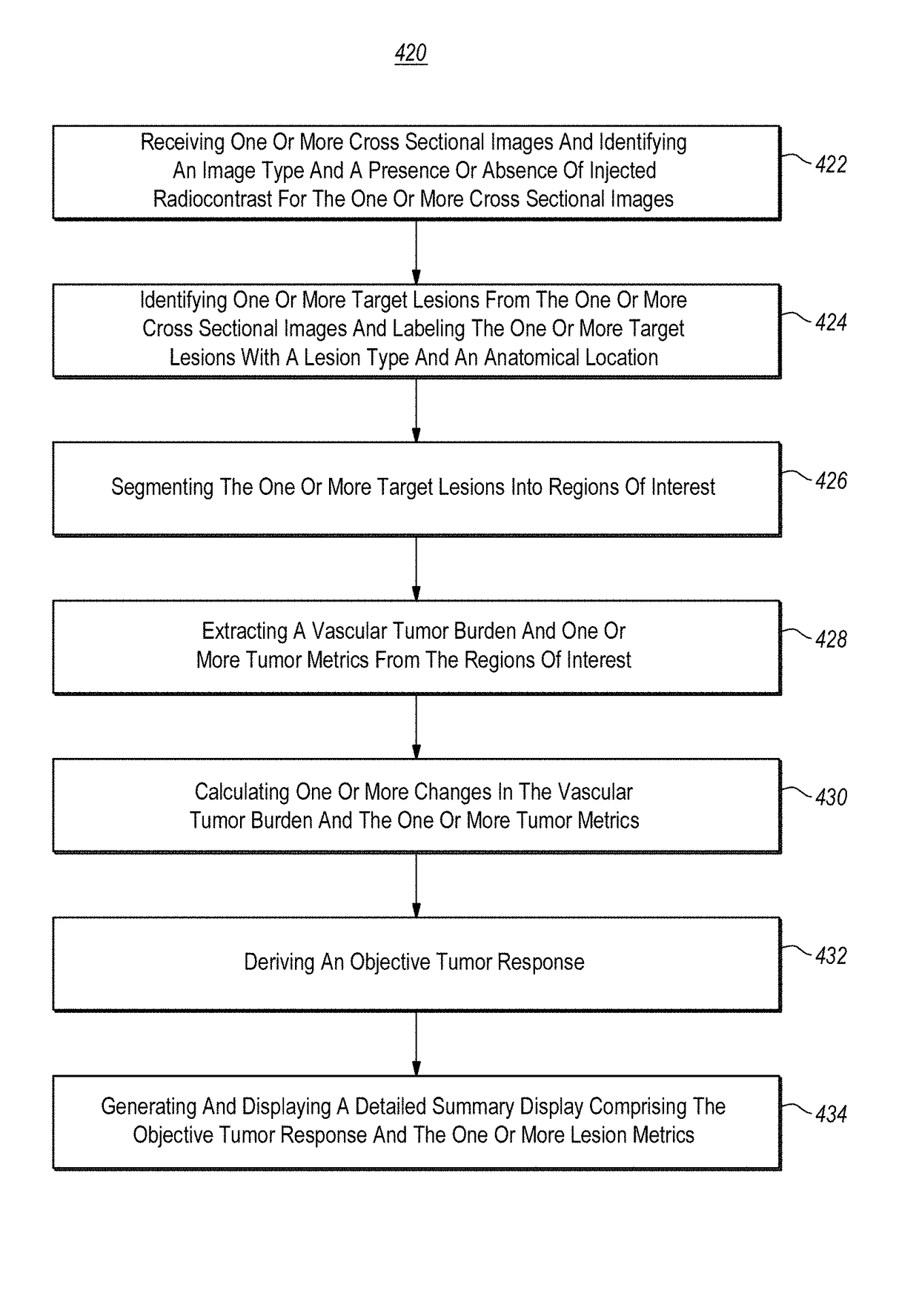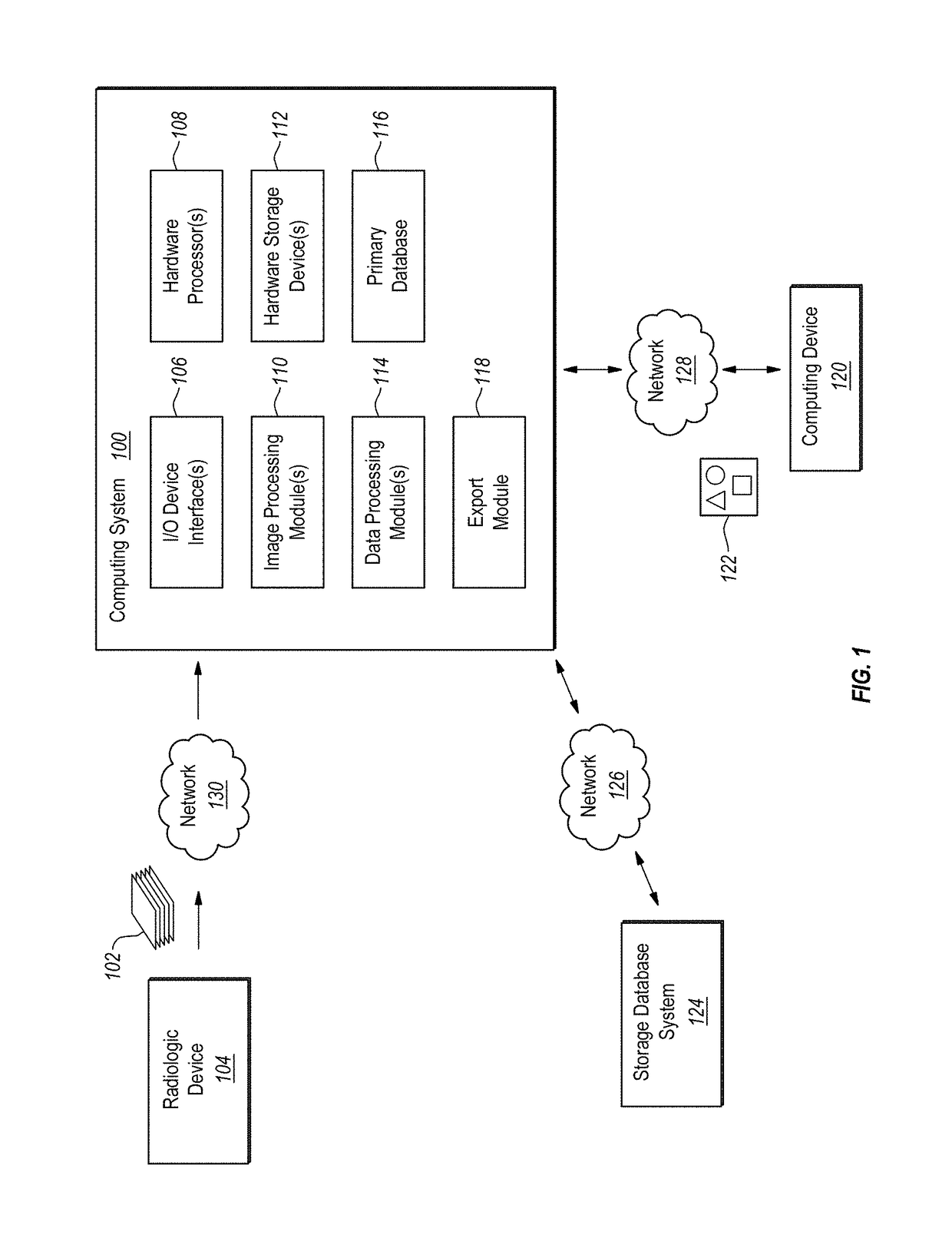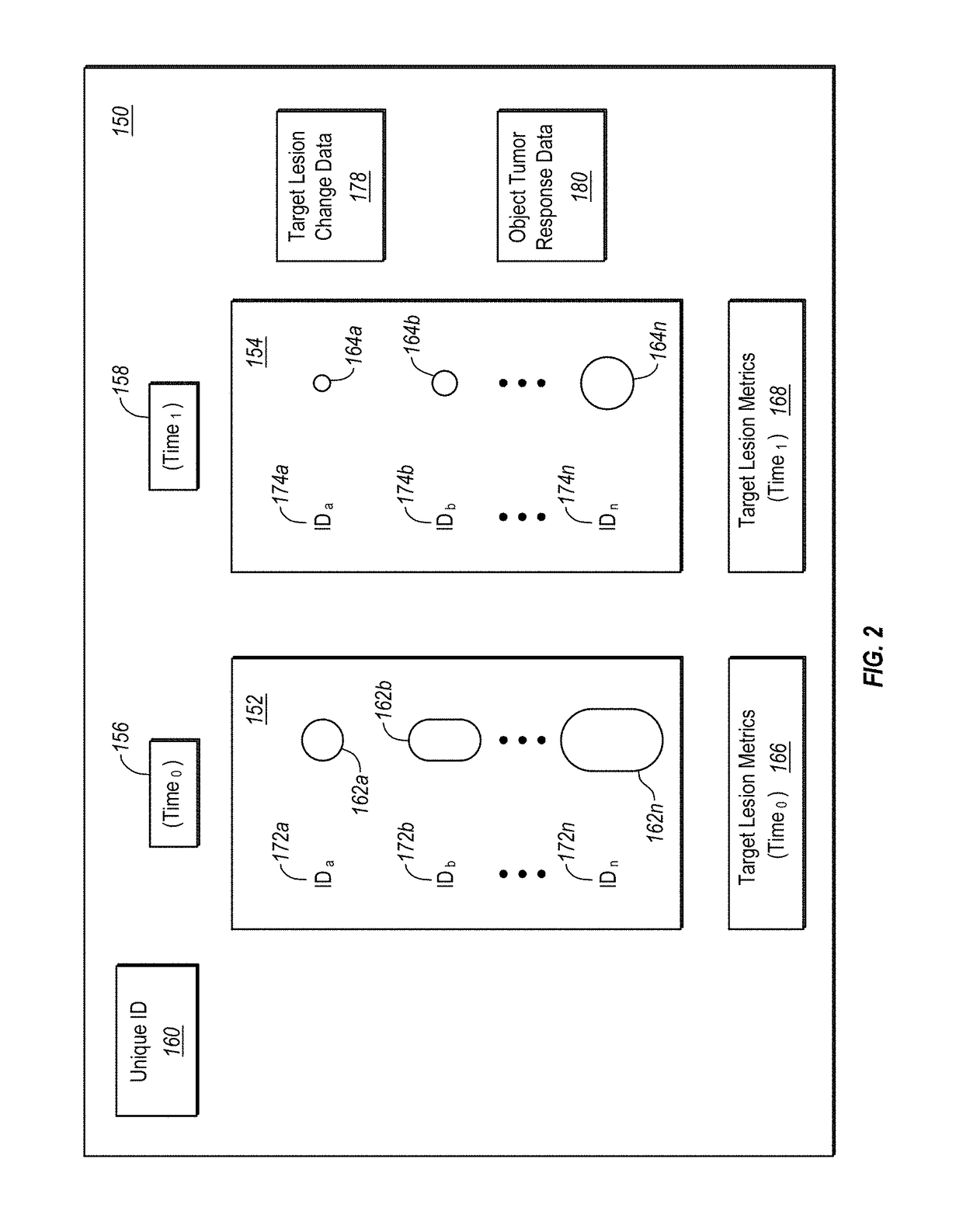Computer-assisted tumor response assessment and evaluation of the vascular tumor burden
a computer-aided tumor and tumor burden technology, applied in image enhancement, instruments, applications, etc., can solve the problems of inability to reliably reproduce the effects of some newer anti-cancer treatment therapies with the current tumor response criteria, inconsistent known tumor response criteria, and difficult implementation, so as to accurately assess the tumor response and effectively monitor the response
- Summary
- Abstract
- Description
- Claims
- Application Information
AI Technical Summary
Benefits of technology
Problems solved by technology
Method used
Image
Examples
example 1
[0139]The following Table 1 lists abbreviations / acronyms used in any of Tables 2-4 together with their meaning.
[0140]
TABLE 1List of Acronyms / AbbreviationsAcronym / AbbreviationMeaningRECISTResponse Evaluation Criteria in Solid TumorsPFSProgression-Free SurvivalOSOverall SurvivalCIConfidence IntervalPRPartial ResponseSDStable DiseasePDProgressive DiseaseHRHazard RatioFRFavorable ResponseIRIntermediate ResponseURUnfavorable Response
[0141]Tables 2-4 include experimental and / or clinical data described immediately below and within FIG. 11. Particularly, the disclosed hazard ratio (HR) is the ratio of the hazard rates corresponding to the responder and nonresponder groups. The hazard rates indicate the likelihood of progression-free survival (PFS) of the entire group. The VTB Criteria has a HR of 5.7, indicating that the nonresponders were 5.7 times more likely to progress than the responders. In Table 2, the p-values are calculated with respect to the indicated comparison.
[0142]In patients...
example 2
[0146]In a large inter-observer analysis study with 11 different readers from 10 different institutions assessing cross-sectional images from 20 patients with metastatic renal cell carcinoma treated with AAG therapy, mean tumor assessment time with computer-assisted tumor response assessment, as disclosed herein, and measurement of the VTB was 50% faster than a routine image viewer and manual data entry (7 vs. 14 min, p<0.001), and patient-level errors were significantly less common (0% vs. 31%, p<0.001). Using the computer-assisted tumor response assessment as disclosed herein, inter-observer agreement was very good for measuring the VTB vs. good for measuring tumor length (intra-class correlation coefficient=0.96 vs. 0.68, p=0.021). These findings suggest that tumor response assessment using the computer-assisted tumor response assessment disclosed herein and measurement of the vascular tumor burden is significantly faster, associated with a marked reduction in errors, and associa...
PUM
 Login to View More
Login to View More Abstract
Description
Claims
Application Information
 Login to View More
Login to View More - R&D
- Intellectual Property
- Life Sciences
- Materials
- Tech Scout
- Unparalleled Data Quality
- Higher Quality Content
- 60% Fewer Hallucinations
Browse by: Latest US Patents, China's latest patents, Technical Efficacy Thesaurus, Application Domain, Technology Topic, Popular Technical Reports.
© 2025 PatSnap. All rights reserved.Legal|Privacy policy|Modern Slavery Act Transparency Statement|Sitemap|About US| Contact US: help@patsnap.com



